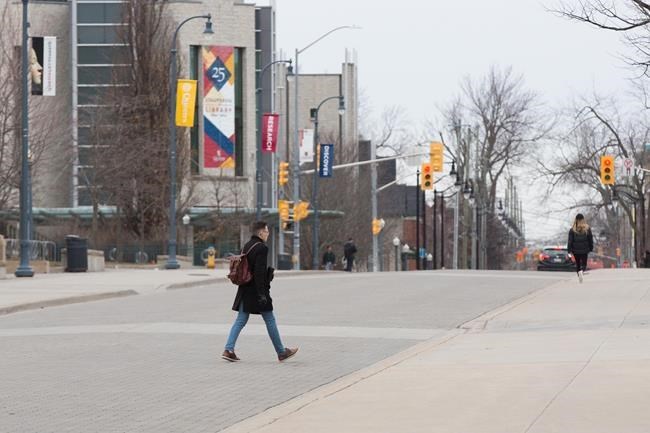TORONTO — Public health restrictions loosened in three Ontario regions with low rates of COVID-19 on Wednesday, with local officials warning that visitors from other areas weren't welcome at reopened businesses.
The provincial government is gradually rolling back a stay-at-home order as regions move to a colour-coded pandemic restrictions system in the coming days.
Hastings Prince Edward; Kingston, Frontenac and Lennox and Addington; and Renfrew County transitioned to the least-restrictive green category of the system on Wednesday, which meant restaurants and non-essential businesses could reopen.
The rest of the province, except for three hot spots in the Greater Toronto Area, moves to the restrictions system next week, with the category regions are placed in dependent on local case rates. Toronto, Peel Region and York Region are to make the transition on Feb. 22.
In Hastings Prince Edward, an order from the medical officer of health that went into effect Wednesday meant only people from regions not under a stay-at-home order could make reservations for dining, accommodation or personal services.
The order also requires businesses to take contact information from patrons and to play music "no louder than the volume of a normal conversation." Violations carry potential fines up to $5,000 for each day of the offence.
The region's top doctor noted the continuing risk to residents from COVID-19 and cited the risk of new, more infectious variants detected in the province.
"We must remember this is not a return to normal," Dr. Piotr Oglaza said in a statement.
"In order to maintain our progress, all residents are asked to remain thoughtful about daily choices, as our actions can have a huge impact on efforts to stop the spread of illness.”
The top doctor in Kingston, Frontenac and Lennox and Addington has also discouraged outside visitors, though he stopped short of issuing an official order.
“It is absolutely not an invitation for anyone else to come to our region,” Dr. Kieran Moore said earlier this week.
He asked people to remain vigilant and said additional measures might follow if virus transmission increases.
On Wednesday afternoon, the public health unit issued a statement asking residents to be "understanding and welcoming" of temporary residents, essential workers and visitors requiring health-care who don't have local addresses.
In Renfrew County, the region's top doctor applauded residents for working to keep cases low, but advised people to continue staying home where possible and limit travel between areas under different restrictions.
“Please remember that this does not mean we can let our guard down," Dr. Robert Cushman said in a statement.
Ontario's daily infections have dropped since the province introduced its stay-at-home order last month, but officials have said the spread of new, more infectious variants are a concern.
Local officials in regions with higher infection rates have suggested that reopening too soon could lead to a worse wave of infections driven by the new variants.
Peel Region's medical officer of health said Wednesday that the government's proposed Feb. 22 date for lifting restrictions in his area is too soon to fully assess the impact of children returning to in-person learning at schools six days earlier.
Dr. Lawrence Loh also pointed to the spread of variants, saying it would be risky to lift restrictions too soon.
He said people should continue to stay home for the next few weeks as in-person classes resume to avoid another lockdown and "months more of agony."
"I know we're all tired, and we might be seduced by the idea of reopening. However, moving too quickly beyond a return to school could present the difference between a third wave or exiting the pandemic successfully in short order," Loh said.
Meanwhile, Ontario said it remains on-track to meet a Wednesday deadline of administering the first dose of a COVID-19 vaccine to every resident of long-term care and high-risk retirement homes, and First Nations elder care homes.
The government said that as of Tuesday night, 95 per cent of the homes had received the vaccine and public health units were to continue reporting on administering doses until 8 p.m. Wednesday.
A spokeswoman for Long-Term Care Minister Merrilee Fullerton said the vaccines are having an impact in the homes.
“We are already seeing the positive effects of the vaccine as the number of residents with COVID-19 is the lowest it has been since October 26, 2020,” Krystle Caputo said in a statement.
Ontario reported 1,072 new cases of COVID-19 Wednesday and 41 more deaths linked to the virus.
This report by The Canadian Press was first published Feb. 10, 2021.
- with files from Shawn Jeffords.
Holly McKenzie-Sutter, The Canadian Press



